Toby
'TOBY'



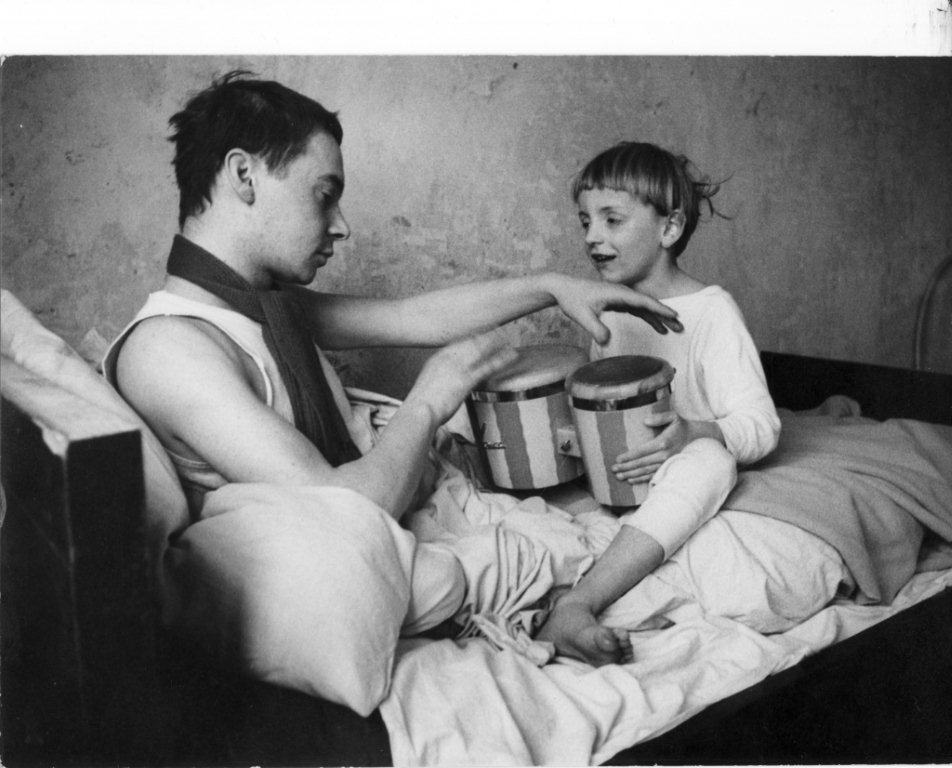
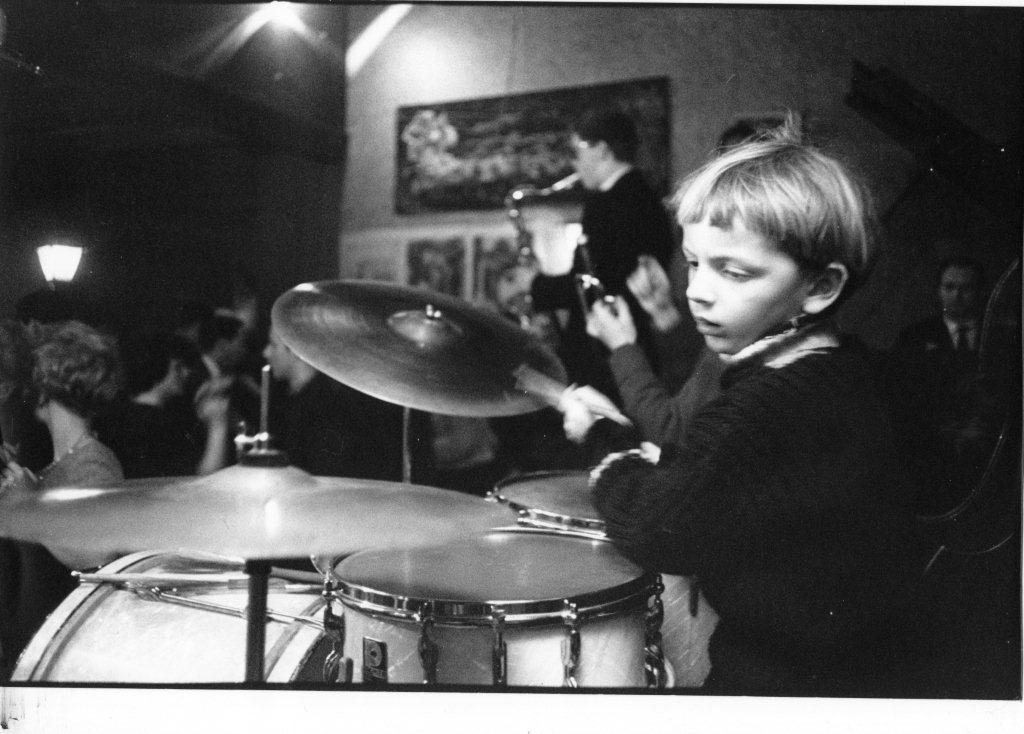







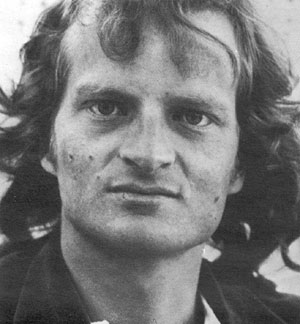
With Popol Vuh: all
Other collaborations:
1972 Tangerine Dream - Zeit
1973 Gila - Bury my Heart at Wounded Knee
Also:
1983 Die Erde und Ich sind Eins
1991 Florian Fricke spielt Mozart
*
In a letter, dated 19.1.1975, Florian Fricke informs rock journalist Günther Ehnert, who was preparing the first edition of his book ‘Rock in Deutschland’. In this letter Fricke gives following account of Popol Vuh:
1.Gründung der Gruppe: Frühjahr 1969
2.Gründungsmitglieder: Florian Fricke, Holger Trülzsch, Frank Fiedler
Aktuelle Anlaß der Gründung: eine Aufforderung der Firma LIBERTY (heute United Artists) eine LP herzustellen.
Wir produzierten “Affenstunde” und traten kurz darauf (1970) im Beatclub (Radio Bremen) auf, und weiter in dem Film “Pop in Deutschland”. Danach im Sommer 1970 Produktion der 2.LP: “In den Gärten Pharaos”. Auch diese Platte wurde in der Besetzung Fricke, Trülzsch, Fiedler hergestellt. Danach fing ich an, statt mit dem Moog Syntisizer für konventionelle Instrumente zu komponieren und stellte dafür auch eine neue Gruppe zusammen: Conny Veith (Stuttgart), Ex-GILA-Guitarrist: E-Guitarre und 12 Saiten, Djong Yun (Berlin) Gesang, Robert Eliscu (München) Oboe, Florian Fricke (München) Klavier, Cembalo und Gesang. Wir nahmen in dieser Besetzung Herbst 1972 “Hosianna Mantra” auf. Die Gruppe hält diese Platte für ihre bisher schönste Arbeit. Es folgte Frühjahr 73 in dieser Besetzung: “Seligpreisung”. Zum ersten Mal ist Daniel Fichelscher dabei, vorher Schlagzeuger bei Amon Düül. Er spielt Schlagzeug und E-Gitarre. Denny ist mit der Zeit als Guitarrist neben mir die wichtigste musikalische Persönlichkeit von Popol Vuh geworden.
Im Frühjahr 1974 nahm ich mit Daniel Fichelscher und Djong Yun die LP Einsjäger & Siebenjäger auf. Sie erscheint in den nächsten Monaten. Dazwischen Filmmusik zu Werner Herzogs “Aguirre, der Zorn Gottes” und anderen Werner Herzog-Filmen. Wegen der großen Beliebtheit der “Aguirre”-Musik erscheint – ebenfalls Frühjahr 1975 – eine Soundtrack-LP von dieser Musik.
Hier wirkten mit: Conny Veith, Daniel Fichelscher, Bob Eliscu, Florian Fricke.
In Arbeit: “Das Hohelied” (Text: Salomo). Produktion: Mitte Februar. Besetzung: Conny Veith, Daniel Fischelscher, Djong Yun, Bob Eliscu, Florian Fricke.
Produziert – so wie “Affenstunde” – für United Artists. Die 5 LP’s dazwischen wurden für Rolf Ulrich Kaiser (BASF u. Metronom) auf wechselnden Labels produziert (Pilz/Metronom u. Cosmic Couriers).
Geburtsdaten: Meines: 23.2.44 (Lindau). Die beiden Gitarristen und Djong Yun sind etwas 10 Jahre jünger, um die 20. Eliscu dürfte um die 30 sein.
Die Gruppe wurde in München gegründet. Sie lebt und arbeitet in München und in Peterskirchen (Oberbayern). Komponist der Popol Vuh ist Florian Fricke. Seit Einsjäger & Siebenjäger sind auch Kompositionen von Daniel Fichelscher im Programm von Popol Vuh zu finden.
Neben Deutschland hat die Gruppe großen Erfolg in Italien und Frankreich. Die Musik von Popol Vuh könnte man als ‘hymnisch-sacral’ bezeichnen. Die Gruppe Popol Vuh arbeitet auf voller professioneller Basis.
In a second letter (3.11.1978) to Günter Ehnert, who was preparing now the second edition of his ‘Rock in Deutschland’, Fricke adds the following:
Frühjahr 75 – “Einsjäger & Siebenjäger”
Sommer 75 – ‘Das Hohelied Salomos” (United Artists)
(danach Aufenthalt in den Bergen Afrikas)
Herbst 76 – Letzte Tage, Letzte Nächte (United Artists)
Frühjahr 77 – “Herz aus Glas” (Barclay, Metronome)
Originaltitel: “Singet, den der Gesang vertreibt die Wölfe”
(danach Aufenthalt bei den Kurden am Euphrat und im östlichen Himalaya, Studium des tibetanischen Gemeinschaftsgesang)
Herbst 78 – “On the Way To A Little Way’(Barclay)
Und
“Brüder des Schattens – Söhne des Lichts”(Metronome)
*
FLORIAN FRICKE AS AN ACTOR
It is too much said to call Florian Fricke an actor, but he did appear in two films by Werner Herzog. Playing music of course...
*
Lebenszeichen (1968)
Florian Fricke .... Pianist
“Il (Fricke) tient dans Signes de vie le rôle d’un pianiste qui joue inlassablement le dernier mouvement, implacable et aérien à la fois, de la 3e sonate de Chopin.” (from: Emmanuel Carrère, Werner Herzog)
*
Jeder für sich und Gott gegen alle
Florian Fricke plays the role of the blind pianist. In one scene Florian sits behind the piano and plays ‘Aguirre’.
1981:
“During the making of the ‘The Enigma of Kasper Hauser’in 1974, Herzog was at Florian’s house while he was playing the piano. He was improvising and just staring at the wall in front of him. Herzog passed comment on the fact that he was playing ‘blind’. A few days later Florian got a call to go to the set. A part had been specially written for him as Florian the blind and orphaned piano player.” (Neumusik, 1981)
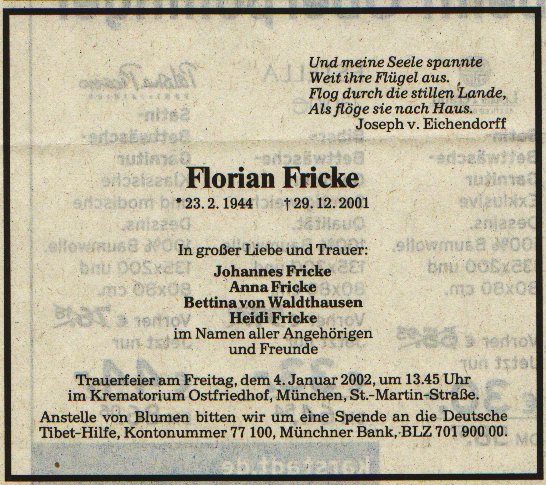

with Popol Vuh:
1970 Affenstunde
1971 Bettina
1972 In den Garten Pharaos
other:
1969 Amon Düül II - Phallus Dei
1970 Embryo - Opal
Holger Trülzsch was born and raised in Munich (1939). Both his parents were architects.
He studied painting and sculpture at the ‘Akademie der bildenden Künste’ in Munich (1960-1965).
As a left-wing student he was an active member of the Sozialistischen Deutschen Studentenbundes (SDS) and one of the leading forces of the student protests in this same city.
Successively he worked as a sculptor, musician, painter, and finally as a photographer.
He was co-worker for ‘Die beispiellose Verteidigung der Festung Deutschkreutz’, a short film by Werner Herzog (1967).
From that same year dates his first musical effort: ‘Projekt 1967' (‘Klangskulpturen in geschlossen und freien Raumen’). In 1969 he joined Popol Vuh and played turkish drums on ‘Phallus Dei’ by Amon Düül II. In 1970 he assisted Embryo on their ‘Opal’ album, playing bongos. In 1970 his collaboration began with photomodel Verushka (Vera von Lehndorff) that lasted for two decades. Famous are their ‘Oxydationen body painting’-series.
Gottliebe von Lehndorff, the mother of Vera, owned an estate in Peterskirchen outside of Munich. This is where Popol Vuh, Anima (Limpe and Pauls Fuchs) a.o., settled down at the end of the sixties. Holger Trülzsch still has a pied à terre there. Since 1983 he lives mainly in Paris.
*
From an interview with Holger Trülzsch for Parisart :
Trülzsch: "De 1960 à 1966, j’étudie la peinture et la sculpture aux Beaux-Arts de Munich, où mon père et ma mère ont fait leurs études d’architecture… Je joue de la batterie et des percussions dans des clubs de jazz… Je m’intéresse aux recherches sur les rapports entre peinture et sculpture du groupe SPUR, du groupe WIR. Je rencontre Asger Jorn qui, après son conflit avec Guy Debord, s’associe au SPUR puis au GEFLECHT (groupe réunissant SPUR et WIR) pour fonder l’Internationale situationniste de Munich.
Une partie de l’année, j’habite dans les montagnes du Tyrol, j’y réalise de grandes sculptures en bronze, en acier, notamment des sculptures éoliennes sonores, «Klangskulpturen». Mon chalet est toujours plein d’amis artistes, cinéastes, écrivains, musiciens.
De 1966 à 1969, mon engagement politique, à travers le mouvement étudiant et l’Ecole de Francfort, devient pour moi essentiel et prioritaire. J’arrête la peinture et la sculpture pour me consacrer à mes activités politiques et à des études en sciences humaines et sociales. Nous voulions entre autres destituer les nazis du IIIe Reich occupant encore des postes importants dans les institutions, la fonction publique, la magistrature, les universités et les Beaux-Arts…
En 1969, avec Florian Fricke je crée le groupe «Popol Vuh» de musique électronique, à base de percussions et du synthétiseur Moog (un des premiers en Allemagne); nous réalisons notamment la musique du film de Werner Herzog, Aguirre, la colère de Dieu."
*
See: www.veruschka.net/
See: Youtube


with Popol Vuh:
1974 Seligpreisung
1975 Einsjäger & Siebenjäger
1975 Das Hohelied Salomos
1975 Live in Milan
1976 Aguirre
1977 Letzte Tage, letzte Nächte
1977 Herz aus Glass
1978 Brüder des Schattens, Söhne des Lichts
1979 Die Nacht der Seele
1981 Sei Still, wisse ICH BIN
1983 Agape Agape Love Love: guitars, vocals, percussion
1983 Florian Fricke - Die Erde und ich sind Eins
1985 Spirit of Peace
1987 Cobra Verde
1991 For you and me
1995 City Raga
other:
1960 Toby Fichelscher - Busting the Bongos - Sonorama – 2013
‘Busting The Bongos’ presents previously unknown tapes with film music and photos from the year 1960. Opening piece ‘Intro’ includes percussion work by the young Daniel Secundus ’Danny’ Fichelscher and friends.
1971 Niagara - Niagara
1972 Niagara - SUB
1972 Amon Düül II - Utopia
1972 Amon Düül II - Carnival in Babylon
1972 Amon Düül II - Wolf City
1973 Gila - Bury my Heart at Wounded Knee
1974 Amon Düül II - Live in London
1974 Maschine no.9. - Headmovie*
1981 Amon Düül II - Vortex
1992 Amon Düül II - Live in London BBC 1973
*) Strange radioplay by Wolf Wondratschek, Bernd Brummbar and Georg Deuter. According to Dag Erik Asbjornsen in his book ‘Cosmic Dreams at Play’, both Renate Knaup and Daniel Fichelscher participated in this project.
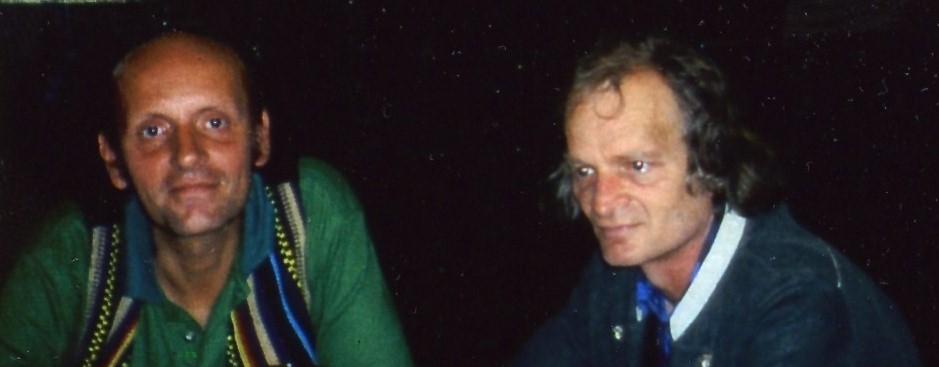
1971 seems to be year that Daniel Fichelscher entered the scene in Munich. He joined Amon Düül II as a second drummer. In the same year he joined the drumproject Niagara of Klaus Weiss.
In her book ‘Tanz der Lemminge’ on Amon Düül II, Ingeborg Schober writes about the origins of Daniel Fichelscher:
‘Er war am 3.7.1953 in Berlin als Sohn eines bekannten Jazzsängers und Pianisten geboren worden. Auch seine Mutter war früher Sängerin, und Danny hatte bereits mit fünf Jahren Schlagzeug gelernt und galt als äußert begabt". (p.137)
His father was Toby Fichelscher a well-known jazzmusician in Berlin.
Toby, Danny as well as other members of the family played a role in the film ‘Toby’(1961) by Hansjürgen Pohland. (see: imdb)
In 1973 Fichelscher did the soundtrack for an episode ('Der Überschlau') of 'Das feuerrote Spielmobil', a tv-series for children. (see: www.fernsehlexikon.de) Premiered November 27, 1973.
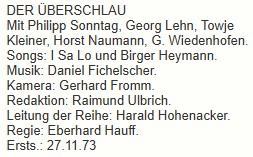
*
From an article on Gila:
"Um so mehr blüht die Zusammenarbeit mit Daniel Secundus Fichelscher. Danny, wie man kürzer sagen kann, wurde als Trommler der Amon Düül 2 bekannt, aber nicht alt. Als der Erst-Trommler der Düüls, Peter Leopold, in die Band zurückkehrte, hämmerten sie eine Weile zu zweit. Daraus wurde ein Wettkampf. "Wer war schneller zu Fuss?". Danny: "Ich hätte mich weiter darauf einlassen können. Aber danach stand mir nicht der Sinn." Er wechselte zur Gitarre. John Weinzierl bediente eine Zeitlang den Bass. Bis eines Tages bei Danny das Telefon klingelte und Düül-Gitarrist Chris karrer sich meldete. Seine Worte: "You are fired". - "Du bist gefeuert".
Noch nie hat ihm die Zusammenarbeit mit einem andern Musiker soviel Spass gemacht wie mit Conny Veit, sagt Danny. Unter ihnen hersschen Gleichberechtigung und Vertrauen. Danny hat hier mehr Aufgaben, als allein für den Rhythmus zu sorgen. Er spielt Gitarre und Bassgitarre dazu. Er stammt aus Berlin. Ist Sohn eines Musikers. Vor jahren hörte er die Düüls auf Platte und flippte über ihr Yeti-Album völlig aus. Mit einem Paar Bongos unterdem Arm haute er von Zuhause ab und kehrte nicht mehr zurück. Neben den Düüls hatte es ihm die Jazz-Sängerin Billie Holiday angetan. Bei dem Filmmusiker F.J.Spieker begann seine musikalische Arbeit. Er traf auf den Ex-Ur-Düül Schrat und lebte mit ihm ein Jahr lang zusammen. Dann holten ihn eines Tages die Düüls." (Pop, 1974)
*
Interview by Enrico Bassi (2009): Youtube [deleted]
Interview Klemen Breznikar (2014): Psychedelicbabymag
Interview with Fairfaxcitymusic (2022): Youtube
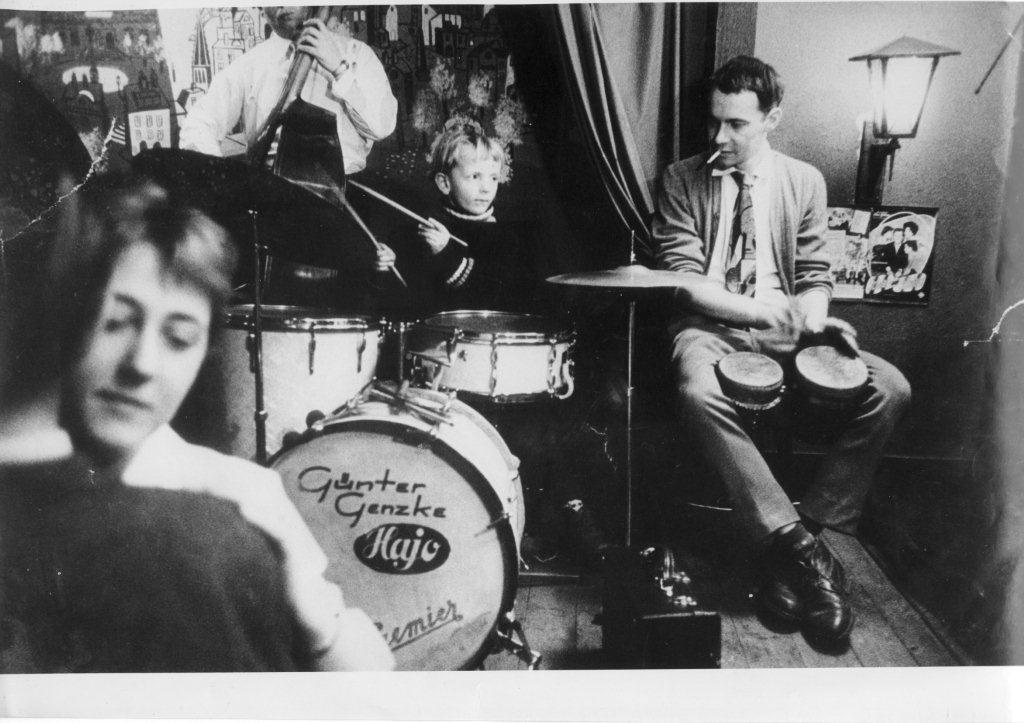

with Popol Vuh:
1973 Hosianna Mantra : electric & 12-string guitar
1974 Seligpreisung : electric & 12-string guitar
1983 Agape Agape Love Love : guitar
1985 Spirit of Peace : electric guitar
other:
1971 Gila - Free Electric Sound
1973 Gila - Bury my Heart at wounded Knee
1974 Joined Amon Düül II for their tour in France; followed by tour with Guru Guru
1985 Coney Island - Dream Walker / We are closing soon
198? Coney Island - Undertown / Misfitz
1999 Gila - Night Works
*
Conny Veit from Stuttgart founded his band Gila in 1969. In his book ‘Der Pate des Krautrock’ Gerhard Augustin, working for United Artists in the 70s, makes mentioning of Conny Veit visiting him - with demotape - in Munich april 1970. The first album of Gila however was released one year later on BASF.
In 1972 Veit returns to Munich again, but with another motive now :
“As for myself, in 1972, aged 21, I decided to move to Munich, because Popol Vuh’s Florian Fricke had invited me to collaborate on his new lp ‘Hosianna Mantra’. I had accepted the offer, yet I didn ‘t want to leave Gila because Popol Vuh was, and still is, a pure studio project. Anyway for me, it was not until I took that step that my life as a professional musician began.” (from: Booklet - cd ‘Bury my Heart at Wounded Knee, Garden Of Delight, 2000)
Interviewed by Gerhard Augustin in 1996 Florian Fricke says the following on how he met Conny Veit:
Gerhard Augustin: In HOSIANNA MANTRA there are some new personnel, such as Conny Veit and Djong Yun. How did you meet them, and how did you come to play with them? Let's first talk about Conny Veit. How did you meet him?
Florian Fricke: Actually, most of the musicians have always sort of found their way to me to play with me. I met Conny Veit at United Artists, my record label at the time, in the office of somebody I knew there (actually Gerhard Augustin himself).
Gerhard Augustin: But this is how Conny started playing with you, he came to your house and you guys just sat down and played?
Florian Fricke: Yes, and he has done this every day. And that is how we actually prepared for almost half a year to record the album HOSIANNA MANTRA.
(See: http://www.eurock.com/features/florian.aspx)
Gila: Danny, Sabine, Conny, Florian
At United Artists Veit probably also met Sabine Merbach who worked there. She was to become his girlfriend and she sang on the album ‘Bury my Heart at Wounded Knee ’.
“While working together with Popol Vuh, I came into touch with Amon Düül II, at that time at the height of their career. They were one of the few German bands who kept to the principle of the commune, living together in a big house near Landhut generally known as Kronwinkel. There, I made the acquaintance of Daniel Fichelscher, Amon Düül’s second drummer besides Peter Leopold. I was very often a guest at Kronwinkel and was immensely impressed by Daniel Fichelscher as a drummer, by the ease of his playing, his capacity for enthusiam, his effervescent personality and almost blind understanding in the jamming. So much was clear: this was the man I wanted to win over for Gila as our drummer. Though at the time, what was left of Gila was me, no-one else. ‘Hosianna Mantra’was finished and my collaboraration with Popol Vuh had ended for the time being. I began to think about what Gila’s future might look like. Today it’s no longer difficult for me to admit that I learned a lot from Florian Fricke, perticularly his way of elaborating a musical theme. During the long period of preparing ‘Hosianna Mantra’ - almost half a year or so - I was able to develop a closer relationship to classical music, which had always been foreign to me up until then. Florian had been to a conservatory and was a disciple of Hindemith. No doubt that there were some domains where he was far ahead of me.” (from: Booklet - cd ‘Bury my Heart at Wounded Knee, Garden Of Delight, 2000)
After the intensive work for ‘Hosianna Mantra’ Conny Veit toured in France with Amon Düül II during the winter of 1973-1974 with Chis Karrer, John Weinzierl, Peter Leopold, Ncik Woodland, Andy Vix and Jutta Weinhold.
According to the 'Blatt'-magazine Gila was programmed on a benefit-concert for the north american indians, on april 7th, 1974 in Munich:
Unser schon lange angekündigter concert für Wounded Knee geht endlich über die Bühne. Am Sonntag den 7. April 1974 um 19.30 Uhr im "Theater der jugend"in der Reitmoorstrasse 7. Es spielen die Rock-Gruppen 'Gila'und 'Sparifankal', der indianische Blues Sänger Jack Grunsky (Canada) und Jan Ince (England). Zudem zeigen wir "The Ballad of Crow Foot"., einen preisgekrönten Kurzfilm des MicMac-Indianers Willy Dunn, einem Sänger und Filmemacher aus Canada. (from: Blatt, nr.20, 1974)
In the summer of 1974 Gila split.
